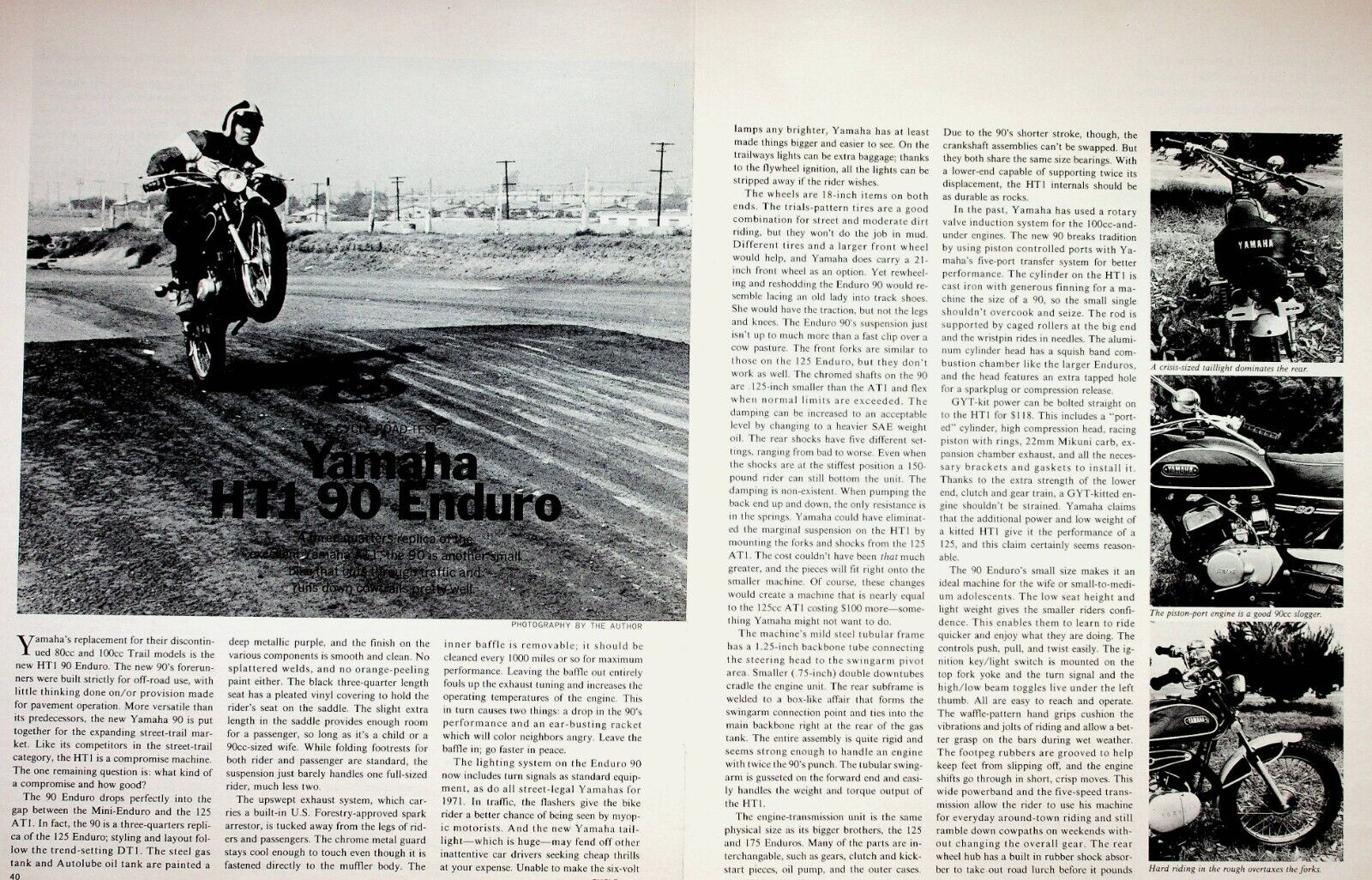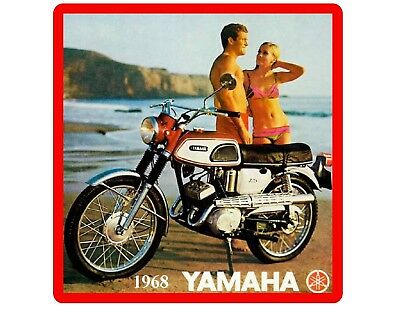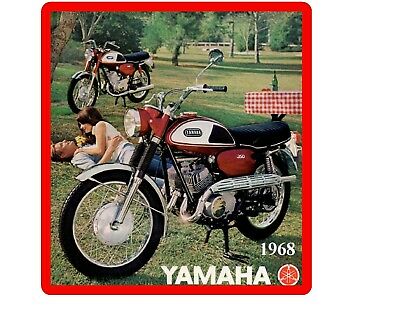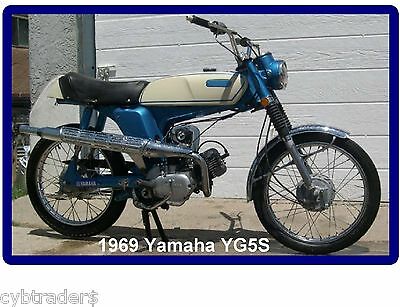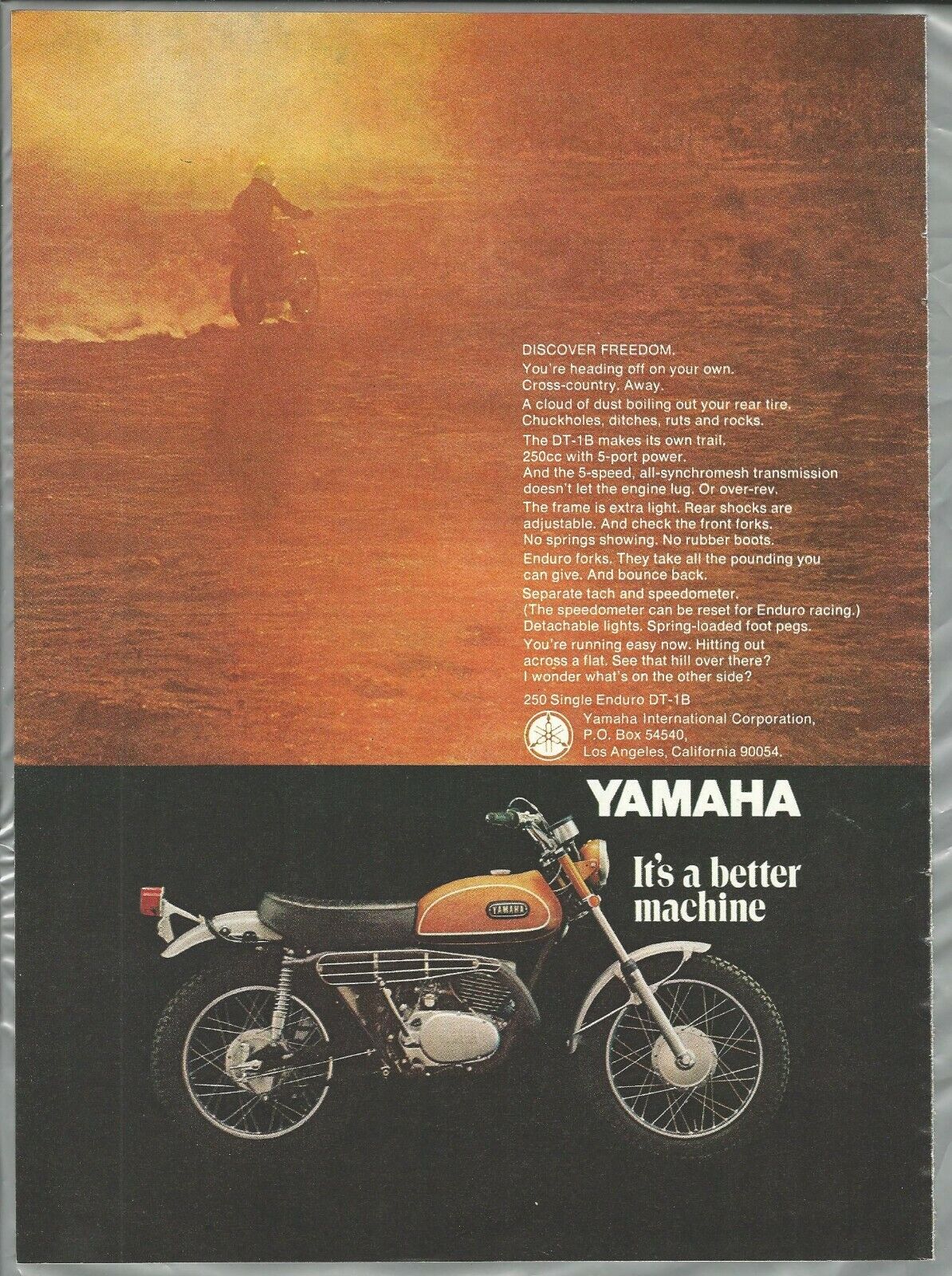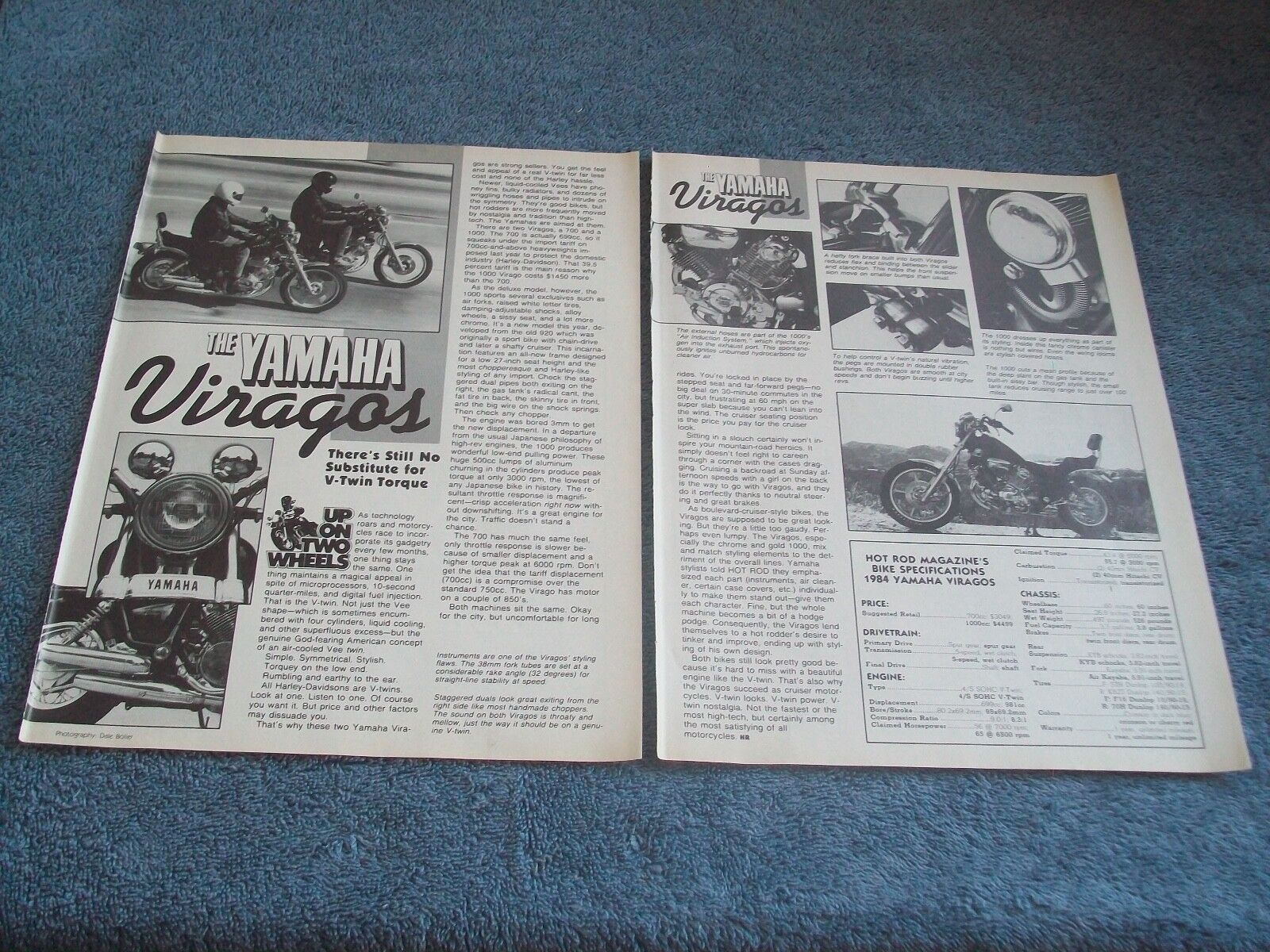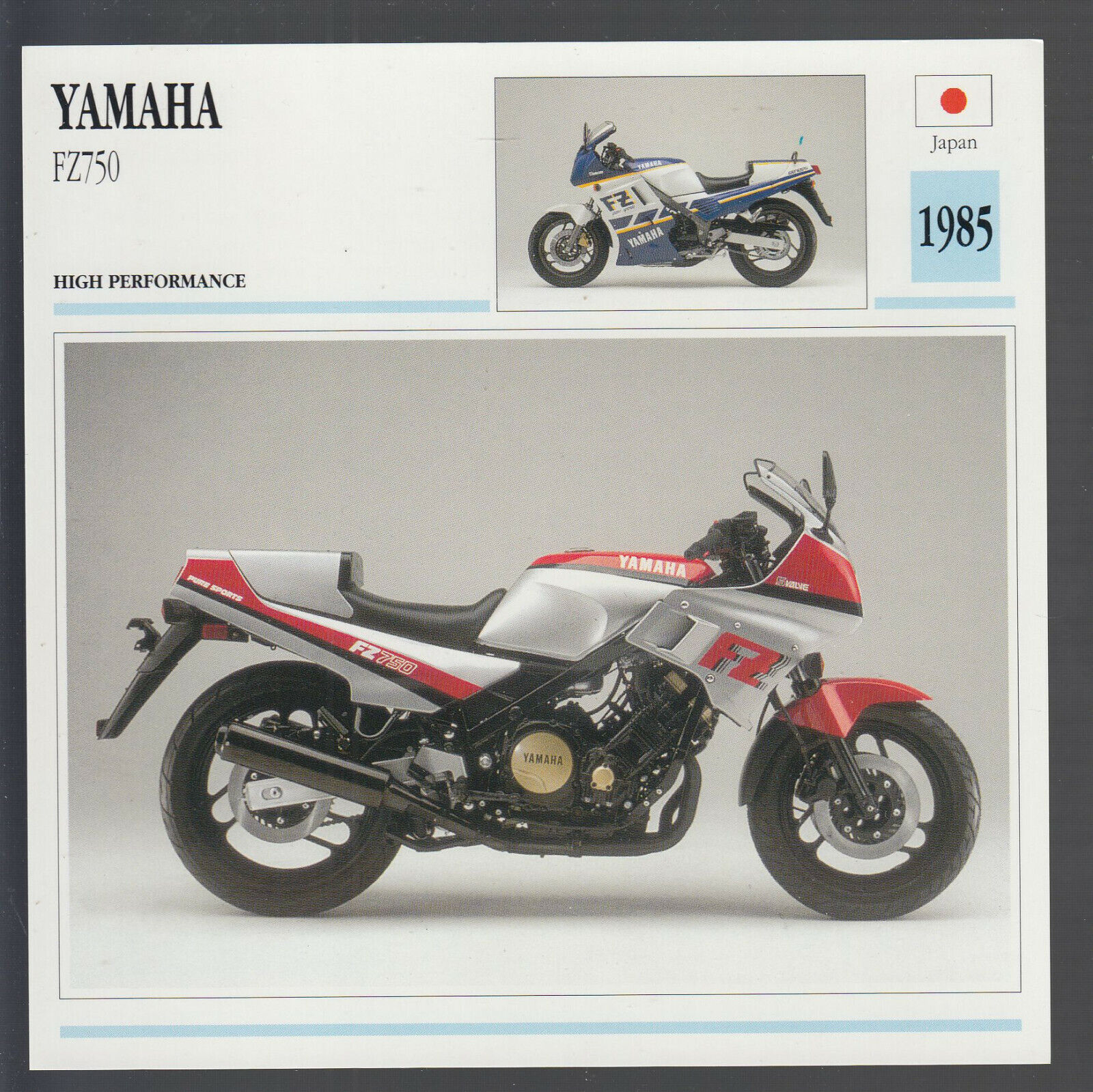-40%
1971 Yamaha HT1 90 Enduro Motorcycle Road Test - 3-Page Vintage Article
$ 7.6
- Description
- Size Guide
Description
1971 Yamaha HT1 90 Enduro Motorcycle Road Test - 3-Page Vintage ArticleOriginal, Vintage Magazine article.
Page Size: Approx. 8" x 11" (21 cm x 28 cm) each page
Condition: Good
Yamaha’s replacement for their discontin-
ued 80cc and lOOcc Trail models is the
new HT1 90 Enduro. The new 90’s forerun-
ners were built strictly for off-road use, with
little thinking done on/or provision made
for pavement operation. More versatile than
its predecessors, the new Yamaha 90 is put
together for the expanding street-trail mar-
ket. Like its competitors in the street-trail
category, the HT1 is a compromise machine.
The one remaining question is: what kind of
a compromise and how good?
The 90 Enduro drops perfectly into the
gap between the Mini-Enduro and the 125
ATI. In fact, the 90 is a three-quarters repli-
ca of the 125 Enduro; styling and layout fol-
low the trend-setting DTI. The steel gas
tank and Autolube oil tank are painted a
40
deep metallic purple, and the finish on the
various components is smooth and clean. No
splattered welds, and no orange-peeling
paint either. The black three-quarter length
seat has a pleated vinyl covering to hold the
rider’s seat on the saddle. The slight extra
length in the saddle provides enough room
for a passenger, so long as it’s a child or a
90cc-sized wife. While folding footrests for
both rider and passenger are standard, the
suspension just barely handles one full-sized
rider, much less two.
The upswept exhaust system, which car-
ries a built-in U.S. Forestry-approved spark
arrestor, is tucked away from the legs of rid-
ers and passengers. The chrome metal guard
stays cool enough to touch even though it is
fastened directly to the muffler body. The
inner baffle is removable, it should be
cleaned every 1000 miles or so for maximum
performance. Leaving the baffle out entirely
fouls up the exhaust tuning and increases the
operating temperatures of the engine. This
in turn causes two things: a drop in the 90’s
performance and an ear-busting racket
which will color neighbors angry. Leave the
baffle in; go faster in peace.
The lighting system on the Enduro 90
now includes turn signals as standard equip-
ment, as do all street-legal Yamahas for
1971. In traffic, the flashers give the bike
rider a better chance of being seen by myop-
ic motorists. And the new Yamaha tail-
light—which is huge—may fend off other
inattentive car drivers seeking cheap thrills
at your expense. Unable to make the six-volt
lamps any brighter, Yamaha has at least
made things bigger and easier to see. On the
trailways lights can be extra baggage; thanks
to the flywheel ignition, all the lights can be
stripped away if the rider wishes.
The wheels are 18-inch items on both
ends. The trials-pattern tires are a good
combination for street and moderate dirt
riding, but they won’t do the job in mud.
Different tires and a larger front wheel
would help, and Yamaha does carry a 21-
inch front wheel as an option. Yet rewheel-
ing and reshodding the Enduro 90 would re-
semble lacing an old lady into track shoes.
She would have the traction, but not the legs
and knees. The Enduro 90’s suspension just
isn’t up to much more than a fast clip over a
cow pasture. The front forks are similar to
those on the 125 Enduro, but they don’t
work as well. The chromed shafts on the 90
are . 125-inch smaller than the ATI and flex
when normal limits are exceeded. The
damping can be increased to an acceptable
level by changing to a heavier SAE weight
oil. The rear shocks have five different set-
tings, ranging from bad to worse Even when
the shocks are at the stiffest position a 150-
pound rider can still bottom the unit. The
damping is non-existent. When pumping the
back end up and down, the only resistance is
in the springs. Yamaha could have eliminat-
ed the marginal suspension on the HT1 by
mounting the forks and shocks from the 125
ATI. The cost couldn’t have been that much
greater, and the pieces will fit right onto the
smaller machine. Of course, these changes
would create a machine that is nearly equal
to the 125cc ATI costing 0 more—some-
thing Yamaha might not want to do.
The machine’s mild steel tubular frame
has a 1.25-inch backbone tube connecting
the steering head to the swingarm pivot
area. Smaller (,75-inch) double downtubes
cradle the engine unit. The rear subframe is
welded to a box-like affair that forms the
swingarm connection point and ties into the
main backbone right at the rear of the gas
tank. The entire assembly is quite rigid and
seems strong enough to handle an engine
with twice the 90’s punch. The tubular swing-
arm is gusseted on the forward end and easi-
ly handles the weight and torque output of
the HTl.
The engine-transmission unit is the same
physical size as its bigger brothers, the 125
and 175 Enduros. Many of the parts are in-
terchangable, such as gears, clutch and kick-
start pieces, oil pump, and the outer cases.
Due to the 90’s shorter stroke, though, the
crankshaft assemblies can’t be swapped. But
they both share the same size bearings. With
a lower-end capable of supporting twice its
displacement, the HTl internals should be
as durable as rocks.
In the past, Yamaha has used a rotary
valve induction system for the lOOcc-and-
under engines. The new 90 breaks tradition
by using piston controlled ports with Ya-
maha’s five-port transfer system for better
performance. The cylinder on the HTl is
cast iron with generous finning for a ma-
chine the size of a 90, so the small single
shouldn't overcook and seize. The rod is
supported by caged rollers at the big end
and the wristpin rides in needles. The alumi-
num cylinder head has a squish band com-
bustion chamber like the larger Enduros,
and the head features an extra tapped hole
for a sparkplug or compression release.
GYT-kit power can be bolted straight on
to the HTl for 8. This includes a “port-
ed” cylinder, high compression head, racing
piston with rings, 22mm Mikuni carb, ex-
pansion chamber exhaust, and all the neces-
sary brackets and gaskets to install it.
Thanks to the extra strength of the lower
end, clutch and gear train, a GYT-kitted en-
gine shouldn’t be strained. Yamaha claims
that the additional power and low weight of
a kitted HTl give it the performance of a
125, and this claim certainly seems reason-
able..
The 90 Enduro’s small size makes it an
ideal machine for the wife or small-to-medi-
um adolescents. The low seat height and
light weight gives the smaller riders confi-
dence. This enables them to learn to ride
quicker and enjoy what they are doing. The
controls push, pull, and twist easily. The ig-
nition key/light switch is mounted on the
top fork yoke and the turn signal and the
high/low beam toggles live under the left
thumb. All are easy to reach and operate.
The waffle-pattern hand grips cushion the
vibrations and jolts of riding and allow a bet-
ter grasp on the bars during wet weather.
The footpeg rubbers are grooved to help
keep feet from slipping off, and the engine
shifts go through in short, crisp moves. This
wide powerband and the five-speed trans-
mission allow the rider to use his machine
for everyday around-town riding and still
ramble down cowpaths on weekends with-
out changing the overall gear. The rear
wheel hub has a built in rubber shock absor-
ber to take out road lurch before it pounds
A crisis-sized taillight dominates the rear.
The piston-port engine is a good 90cc slogger.
Hard riding in the rough overtaxes the forks...
16486
